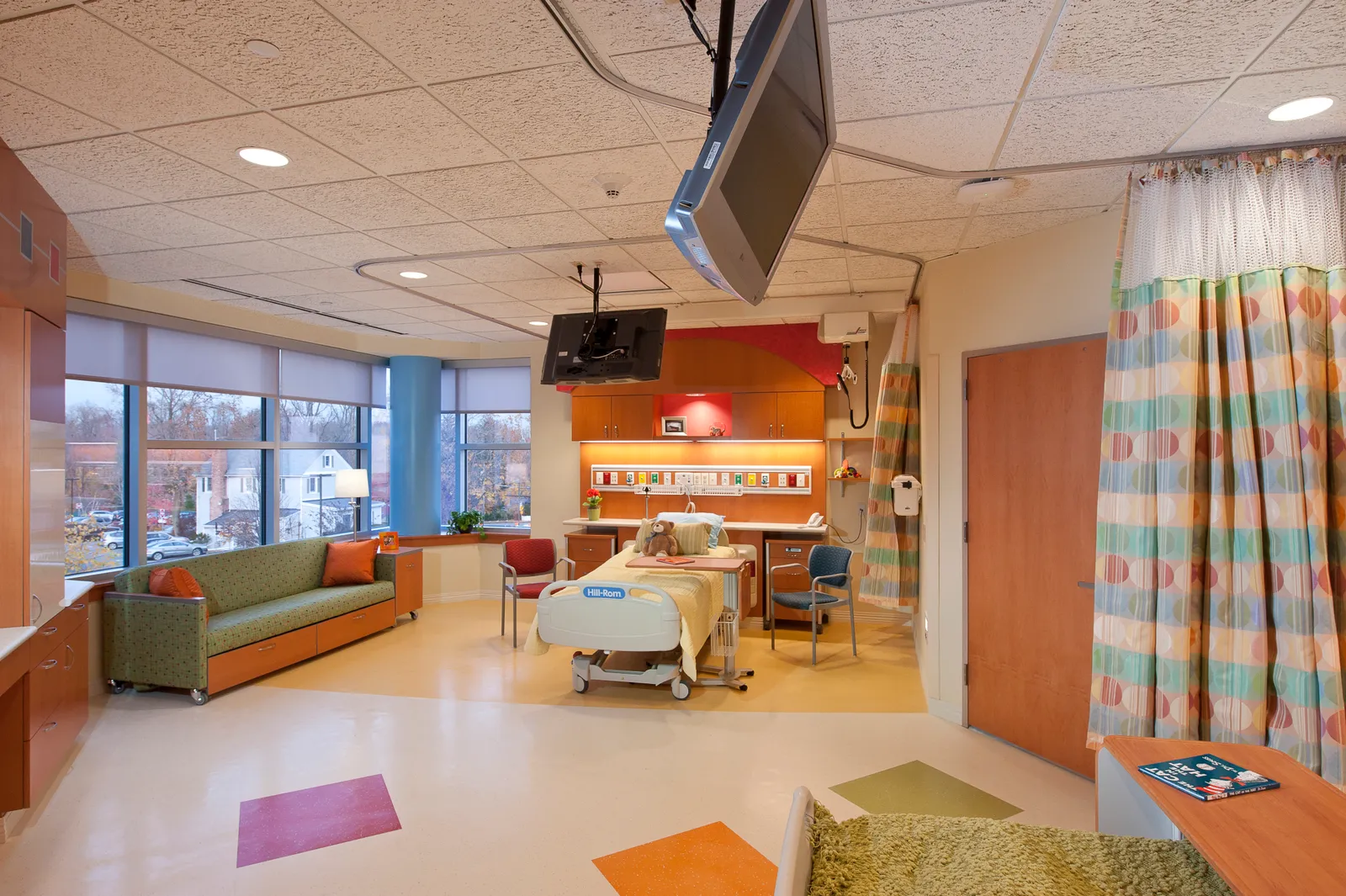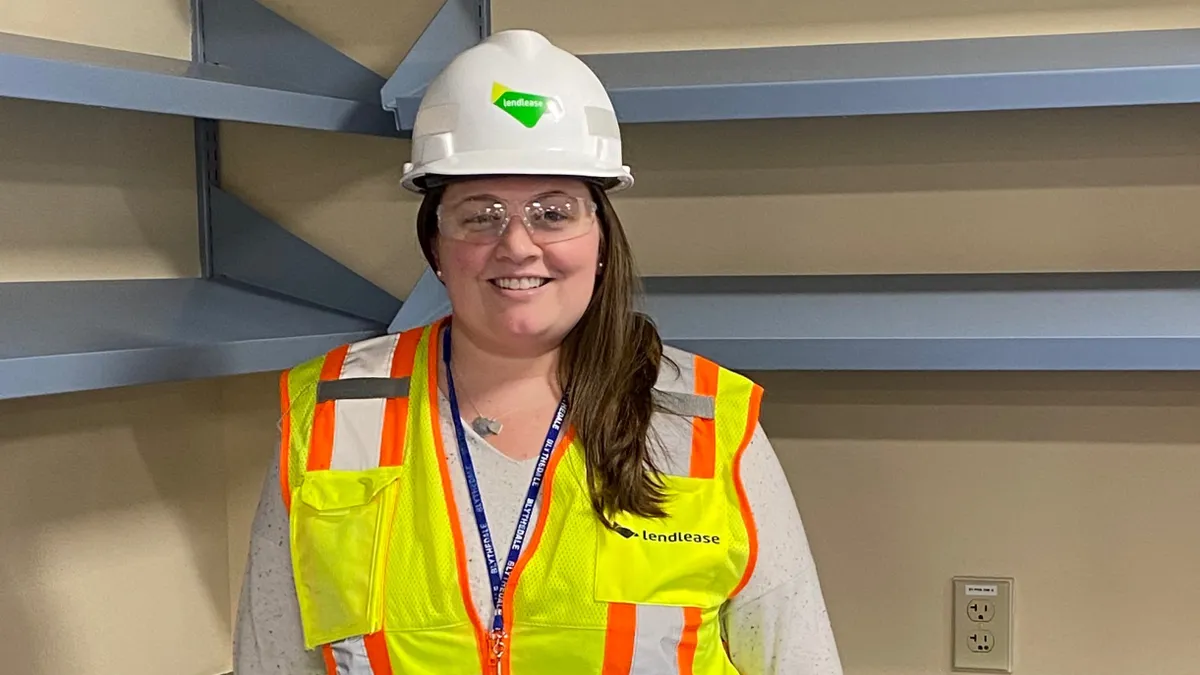This article is one in a series of conversations with women leaders in the construction industry. Click here for past discussions.
While pursuing an engineering degree at the University of Notre Dame 16 years ago, Christina Champness became interested in a career in commercial construction. Preferring hands-on challenges over the monotony of a desk job, Champness said that she gravitated toward construction for the opportunity to use her problem-solving skills on complex projects.
An internship with Australia-based developer and contractor Lendlease solidified her conviction.
“Progressing from intern to full-time project engineer and subsequently to my current role as project executive, I can say after more than 15 years that no two days have been the same and I made the right decision,” she said.
The youngest project executive in Lendlease’s New York City office, Champness is part of the firm’s healthcare construction team. She has worked on projects for NYU Langone Health, White Plains Hospital and Blythedale Children’s Hospital, among others.
“Every phase of each project has different demands, but to date, my duties have included managing a team of project managers and superintendents, overseeing buyout of subcontractors, scheduling development, constructability drawing review, cost management, field coordination and, perhaps most important, review of safety measures,” she said.
Here, Champness talks with Construction Dive about challenges in healthcare construction, moving up the career ladder and the importance of continuing education.
This interview has been edited for brevity and clarity.
CONSTRUCTION DIVE: What special challenges do healthcare projects present?
CHRISTINA CHAMPNESS: Because the healthcare industry evolves so frequently and so quickly, medical spaces require unparalleled flexibility and adaptability. They are also highly technical and complex projects and therefore benefit from close collaboration among all stakeholders. This has always been the case, but it became even more apparent during the COVID-19 pandemic.
For example, my team was renovating multiple spaces for NYU Langone Health, including the main campus in Manhattan, when the onset of COVID-19 compelled us to pivot and quickly build temporary testing and treatment spaces. My construction team, our subcontractors, the client and the design team were in constant communication to find the most efficient way to achieve what we wanted to build, even as our understanding of the virus and the risks it posed developed.
We were able to build these spaces in a very short period due to the hard work and collaborative mindset of everyone involved.
Several years removed from the start of the pandemic, it remains apparent that the dynamism of the sector requires those involved in healthcare construction to stay abreast of the latest trends and technologies. It’s also evident that communication among all parties throughout every stage of a project is the best way to ensure a successful outcome.
What project have you most enjoyed working on and why?
One of my favorite projects was our expansion and renovation program for Blythedale Children’s Hospital in Westchester, New York. I helped oversee site work — including replacement of gas-fired chillers, relocation of the chiller exhaust flue to the exterior of the building and cooling tower installation and refurbishment.

My team and I completed many other tasks during our long-term engagement with BCH, including renovation and expansion of the Milton Spahn Therapy Village, construction of a new simulation lab and parent training center, new pharmacy and expansion of the traumatic brain injury unit.
This high-tech center can provide rehabilitation and recovery services for more than 170 young patients at a time. It is very rewarding to be part of a team making a difference for children and their families.
What benefits are there to working in construction?
The variability of this job keeps me on my toes and energizes me to come to work, as I never know what fresh challenge awaits me each day. Since assuming a senior leadership position, I've refined my multitasking skills so as to more effectively manage numerous ongoing projects and project partner relationships.
That said, I’ve also learned to delegate — a task that is all the easier due to the diverse and knowledgeable team I work with at Lendlease. By establishing and training a capable team, I have confidence that all client needs are met and every project continues to move forward.
What advice would you give to young women considering construction as a career?
Construction has historically been a male-dominated industry, but that’s slowly starting to change. Not only are there incredible job opportunities — women who enter the field can have a meaningful impact on individual projects and the broader industry by contributing their unique point of view. Self-empowerment is the best approach for any young women who want to advance their construction career. This means speaking up, both to ask questions and to offer insights, so their voices are heard.
I also encourage the next generation to actively seek out education and training opportunities, which include formal certification and accreditation programs that complement their on-the-job experience. Continuing education not only keeps you informed of trends but also demonstrates engagement and initiative when applying for leadership positions and interacting with clients.























